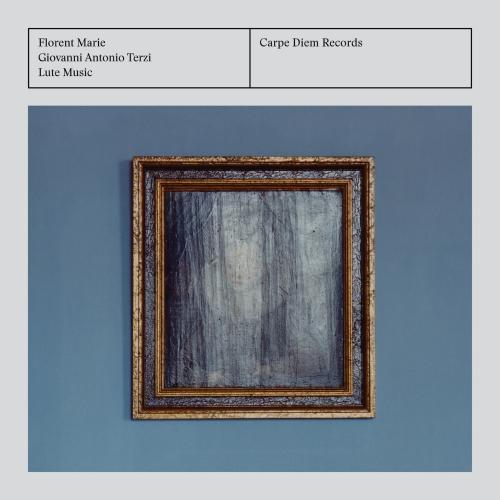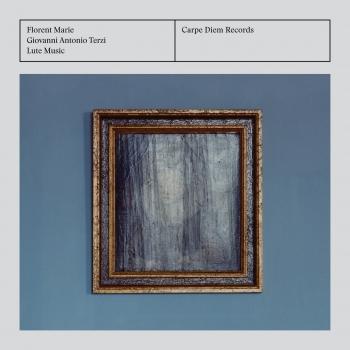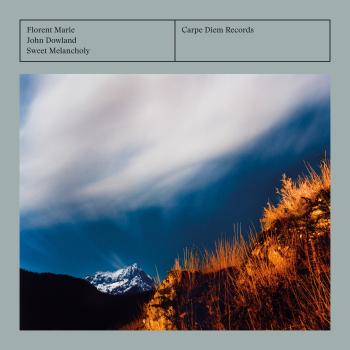
Giovanni Antonio Terzi: Lute Music Florent Marie
Album info
Album-Release:
2021
HRA-Release:
09.11.2022
Label: Carpe Diem Records
Genre: Classical
Subgenre: Chamber Music
Artist: Florent Marie
Composer: Giovanni Antonio Terzi (1580-1600)
Album including Album cover Booklet (PDF)
- Giovanni Antonio Terzi (1580 - 1620):
- 1 Terzi: Toccata Seconda dell'Autore 02:55
- 2 Terzi: Caro dolce ben mio, a 5. di Andrea Gabrieli 04:36
- 3 Terzi: Courante francese 01:18
- 4 Terzi: Preludio de l'Autore 02:47
- 5 Terzi: Saltarello 01:26
- 6 Terzi: Gagliarda 01:36
- 7 Terzi: Candide perle del Bicci nel medesimo Libro 03:33
- 8 Terzi: Ballo Tedesco, & Francese 03:13
- 9 Terzi: Il Saltarello del prescritto Ballo 00:46
- 10 Terzi: Fantasia Terza dell'Autore 03:52
- 11 Terzi: Gagliarda 12. Del S.Agostino Vertoa da Bergamo composta 02:02
- 12 Terzi: Preambulo de l'Autore 01:39
- 13 Terzi: Branle simple Francese 01:21
- 14 Terzi: Corrente Quarto 00:36
- 15 Terzi: Volta Seconda Francese 00:44
- 16 Terzi: Canzone Settima del Mascara 06:41
- 17 Terzi: Passamezzo per b quadro in tre modi 03:10
- 18 Terzi: La sua Gagliarda 03:13
- 19 Terzi: Veni in hortum meum A Cinque. Di Orlando Lasso 05:30
- 20 Terzi: Padoana 05:28
- 21 Terzi: Toccata de l'Auttore 00:59
- 22 Terzi: Ballo secondo Alemano 00:59
- 23 Terzi: Ballo Alemano Settimo 00:34
- 24 Terzi: Volta quarta Francese 01:03
- 25 Terzi: Ahi chi mi rompe il sonno a 5. Filip. de Monte 02:37
- 26 Terzi: Di che'lla mosta: 2a parte 02:27
- 27 Terzi: Pass'e mezo último 02:39
- 28 Terzi: Gagliarda del Pass'e mezo 03:47
Info for Giovanni Antonio Terzi: Lute Music
Do you know Giovanni Antonio Terzi, the mysterious lutenist from Bergamo who frequented the most important art venues in northern Italy at the end of the 16th century? If not, don't worry: so few recordings are dedicated to him that he sometimes even passes under the radar of musicians specializing in this musical period.
Why is he so rarely played nowadays? Let's take a look at his music first. Terzi is so inventive in his adaptations of vocal models, that it is difficult to find an equivalent in other sources of Italian lute music of this period. A true master of his art! As for his dances, they reach a kind of ideal, a right balance between irresistible rhythmic impulse and impressive flowering of very varied diminutions which make all registers of the instrument sing in turn. In this sense, one can safely consider that Giovanni Antonio Terzi is the one who has pushed the limits of the renaissance lute in Italy the furthest. He is a virtuoso, but this word is not to be taken in its demonstrative sense. His diminutions are always in the service of a right expression. Some pieces are less flamboyant and, favored by a slow tempo, are truly conducive to introspection, transporting us out of the agitation of contemporary life. This may even be considered as a "musicotherapeutic" facet of his music...
So, once again, why is this composer so little performed? It is true that his pieces often require a very advanced technique, which, unfortunately, has sometimes given Terzi the reputation of a "technical" composer, the first impression being often the one retained by the human brain.
And yet, when working on his music for a longer period of time, one realizes that this is not the case. After an initial process of patiently finding one's way through this dense tablature, one discovers a universe of musical richness that sublimates all these "earthly" concerns, these technical constraints that prevented us from seeing the essential.
The work of Giovanni Antonio Terzi was almost forgotten forever, given the small number of sources that have come down to us: 4 copies of the first book (1593), and only two copies of the second book (1599). This recording is the first one that is dedicated only to his pieces, and more than 70% of them are previously unpublished. A real novelty to discover!
Florent Marie, Renaissance lute
Florent Marie
Music has always played an important part in Florent’s family: Singing polyphonic music and having a lute-making father — who built most of his instruments - probably explains why he chose to devote himself to the lute family. At the Conservatoire National Supérieur de Musique et de Danse in Lyon he obtained his lute qualifications in Eugène Ferré’s class (2006) and discovered with Jean-Yves Haymoz the techniques of polyphonic improvisation, thus becoming one of the first lutenists to improvise ricercari in public.
Ever since he has involved himself in diverse projects. His field ranges from the theatre with the Ensemble Non Papa or with la Compagnie de Mars — he played the role of Lysander in the play Puck by Marie-Laure Desbordes — to Renaissance dances with Compagnie de Maître Guillaume, not to mention songs with Lidia Pujol or slam with Kwal. His most eclectic experience was the production entitled Orphée with the Montalvo-Hervieu company at the Théâtre National de Chaillot in Paris, in which he improvised on the theorbo to accompany hip-hop and Baroque dancing, touring many countries. Furthermore he collaborates regularly with different specialized European ensembles: Ensemble Céladon, Collegium Vocale Gent, les Traversées Baroques, la Douce Semblance, Ensemble Correspondances, le Baroque Nomade, le Banquet Céleste, les Folies Françoises, Armonica Stanza, Contrapposto, Son ar Mein, Doulce Mémoire…
Booklet for Giovanni Antonio Terzi: Lute Music












